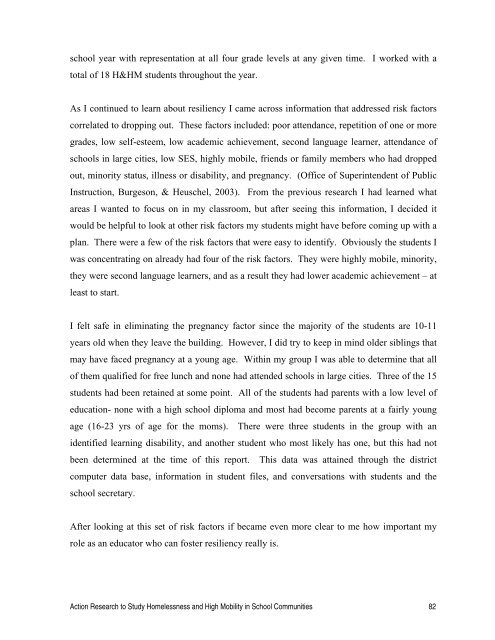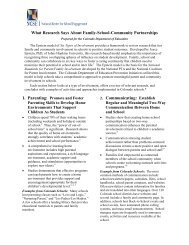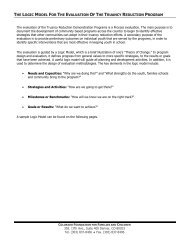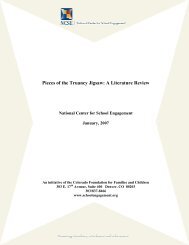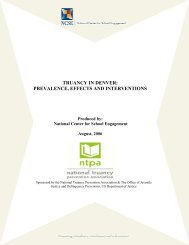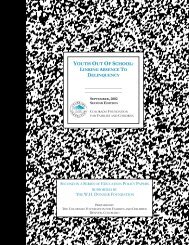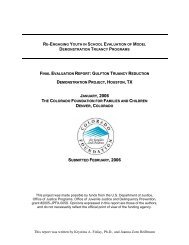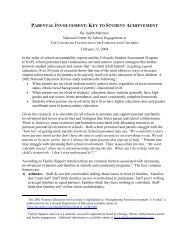Section 1: Academic Achievement - National Center for School ...
Section 1: Academic Achievement - National Center for School ...
Section 1: Academic Achievement - National Center for School ...
You also want an ePaper? Increase the reach of your titles
YUMPU automatically turns print PDFs into web optimized ePapers that Google loves.
school year with representation at all four grade levels at any given time. I worked with a<br />
total of 18 H&HM students throughout the year.<br />
As I continued to learn about resiliency I came across in<strong>for</strong>mation that addressed risk factors<br />
correlated to dropping out. These factors included: poor attendance, repetition of one or more<br />
grades, low self-esteem, low academic achievement, second language learner, attendance of<br />
schools in large cities, low SES, highly mobile, friends or family members who had dropped<br />
out, minority status, illness or disability, and pregnancy. (Office of Superintendent of Public<br />
Instruction, Burgeson, & Heuschel, 2003). From the previous research I had learned what<br />
areas I wanted to focus on in my classroom, but after seeing this in<strong>for</strong>mation, I decided it<br />
would be helpful to look at other risk factors my students might have be<strong>for</strong>e coming up with a<br />
plan. There were a few of the risk factors that were easy to identify. Obviously the students I<br />
was concentrating on already had four of the risk factors. They were highly mobile, minority,<br />
they were second language learners, and as a result they had lower academic achievement – at<br />
least to start.<br />
I felt safe in eliminating the pregnancy factor since the majority of the students are 10-11<br />
years old when they leave the building. However, I did try to keep in mind older siblings that<br />
may have faced pregnancy at a young age. Within my group I was able to determine that all<br />
of them qualified <strong>for</strong> free lunch and none had attended schools in large cities. Three of the 15<br />
students had been retained at some point. All of the students had parents with a low level of<br />
education- none with a high school diploma and most had become parents at a fairly young<br />
age (16-23 yrs of age <strong>for</strong> the moms). There were three students in the group with an<br />
identified learning disability, and another student who most likely has one, but this had not<br />
been determined at the time of this report. This data was attained through the district<br />
computer data base, in<strong>for</strong>mation in student files, and conversations with students and the<br />
school secretary.<br />
After looking at this set of risk factors if became even more clear to me how important my<br />
role as an educator who can foster resiliency really is.<br />
Action Research to Study Homelessness and High Mobility in <strong>School</strong> Communities 82


